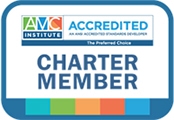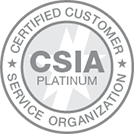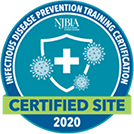Without active members to help advance its mission, an association will eventually fade into irrelevance. Similarly, if you only join an association to add a line to your resume, you won’t maximize the potential of your membership experience. Don’t worry – getting involved with your association doesn’t have to mean making a huge time commitment. Whether you recently joined or you’ve been a member for years, you can always contribute at any level.
1. Share your opinion
Association leaders frequently turn to their memberships with surveys or focus groups to learn about what programs or services to provide, to hear what members thought of a recent event, or to get feedback on an upcoming change. It’s easy to click “delete” on that survey email in an inbox-clearing spree, but when you take those surveys or respond to calls for focus group participants, you help shape the future of your association. Next time, participate! You will really be helping yourself by having your association tailor its products, services, and events to your needs.

2. Vote
Voting in elections is another great way to start getting involved with your association without making a major time commitment. Most associations hold elections for board members, committee leaders, and other major roles. By educating yourself on who is running and then voting for the most qualified candidate, you protect the future of your association. Is one of the candidates in your field of study? If they seem qualified for the position, vote for them! You will help ensure that your field or specialty has a voice at the table – a representative who can help make decisions that will benefit you and members like you.
3. Network online
Many associations have a blog that highlights timely topics or breaking news in the field. Reading these blog posts can help you stay up to date on your field and on your association, and sharing your thoughts in the comment section can help get your name recognized by the association leaders who write these posts. Similarly, if your association offers any kind of online community for networking, take the time to read other members’ contributions and write your own thoughtful responses. Even responding to your association’s social posts can be a great way to get involved. By taking the time to learn what your association is doing and showing that you care enough to respond, you will begin to be recognized as someone dedicated to your association’s development.

4. Create content
You’ve been reading and responding to blogs and social posts, and now you have an idea of your own that you want to share with your fellow association members. Reach out to your association’s staff to find out how you can contribute a blog post of your own! Most groups are happy to have member-contributed content, since it offers a great new perspective. If your association doesn’t have a blog, consider creating another type of content, such as a set of educational guidelines or a quick audio recording on a specific topic. It’s especially helpful if you can identify and fill a gap in your association’s current content offering. You can showcase your unique skills and provide value to your fellow members at the same time, on your own time.
5. Run for a position
Once you’ve tried getting involved on a smaller scale, you may decide you want to participate at a higher level. By now, association leaders should be familiar with your work and see you as someone worthy of serving on a task force, committee, or even the board of directors. Reach out to your association’s leaders or staff to learn about the different available positions. Remember to ask key questions: What is the time commitment or the skill set required for the position you are interested in? Is the position elected or appointed? Who else would you work with? Learn as much as you can about the position you are interested in, and then pursue your goal if it seems like a good fit.




